Is This the Ugliest Concept Car Ever Made?
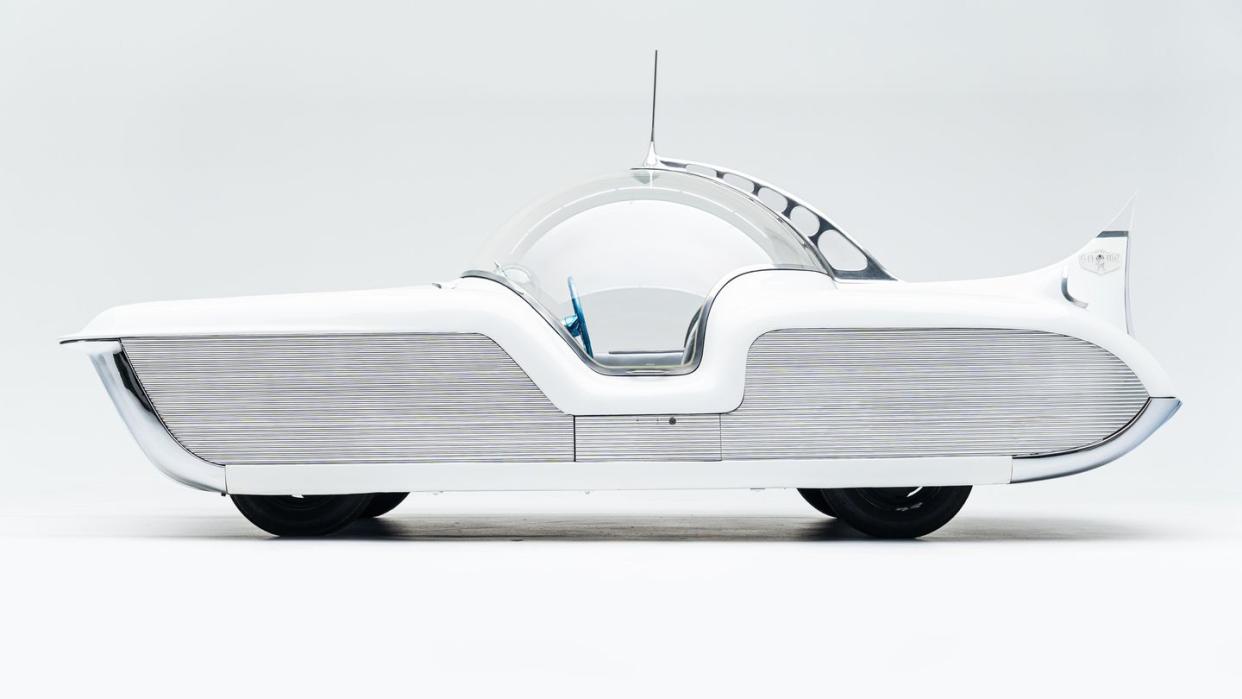
When you think of concept cars, you think of great examples of wheeled art meant to inspire optimism for the future, yearning for beauty and speed, or simply lust for a certain automotive brand.
That was the idea, anyway.
“Eyes on the Road: Art of the Automotive Landscape” is a new exhibit at the Petersen Automotive Museum that offers up both automotive art and concept cars in the same room. The museum’s latest expo, running through November, is a double-whammy celebration of art and the automobile.
But was this the best they could find?
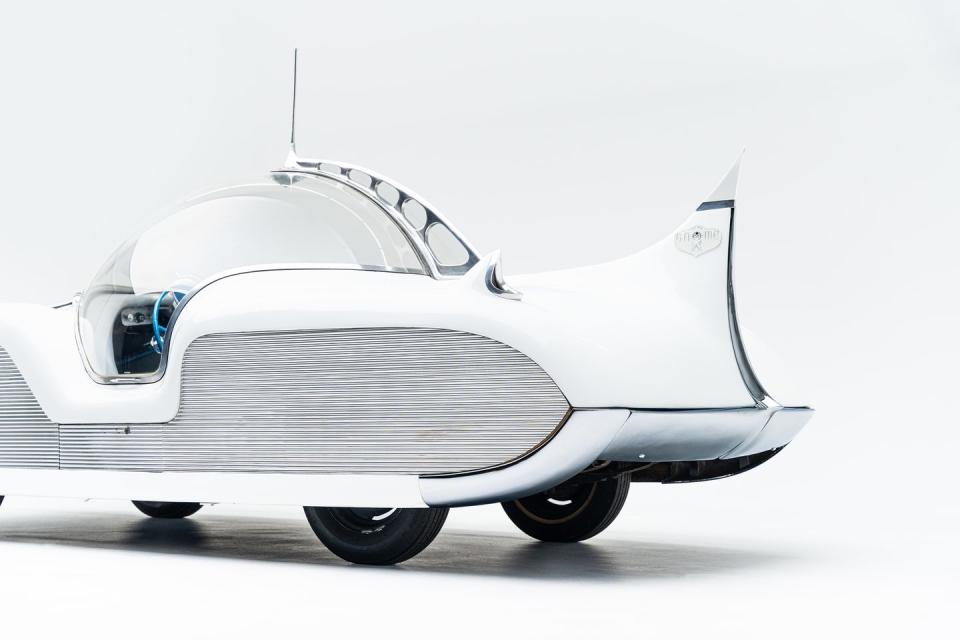
Consider the centerpiece concept car, the Astro-Gnome. Designed by Richard Arbib and bolted on top of a perfectly innocent 1955 Nash Metropolitan chassis, it was described as a “Time and Space Car” in the book, The Cars of American Motors. According to another source, Cars of Tomorrow, it is supposed to “feature themes influenced by the space travel forms that were popular during the 1950s.”
In a later interview, Arbib said the 1956 vehicle was meant to represent the designer’s “vision of what an automobile would look like in the year 2000.” Instead, it looks like something George Jetson would take his mistress out in during a business trip from Spacely Sprockets to Space Vegas. Arbib also designed two forgettable 1957 Hudsons—the Hornet Super sedan and the Hollywood 2. He did some nice boats later in life.
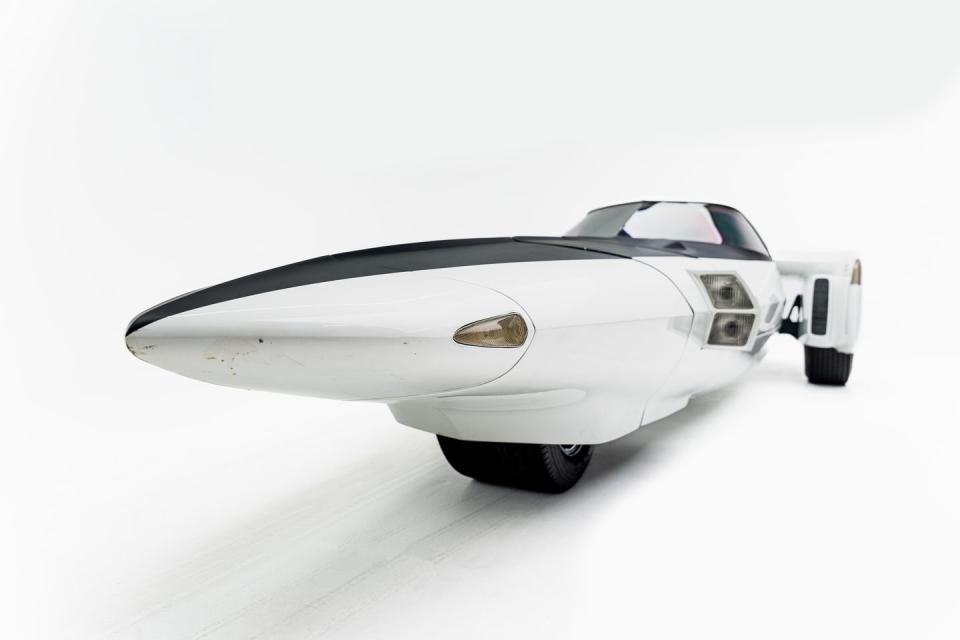
The 1969 Chevrolet Astro III has the lawn dart-appeal of a failed NASA rocket, though you could argue it preceded the 2012 Nissan Delta Wing by 50 years. GM called it a “Two-passenger experimental car resembling an executive jet aircraft, down to its tricycle wheel arrangement.”
More specifically, “It was envisioned as a high-performance vehicle suited for travel on restricted access highways of the future,” GM’s Heritage Collection explained. “The Astro III featured a power canopy that moved forward and upward to allow easy access to the passenger compartment which was finished in aircraft style interiors. Rear vision was provided by closed circuit television and Astro III was powered by a gas turbine engine that was found in military and civilian helicopters of the time.”
GM never made a three-wheeled car, and given the shortcomings of the Delta Wing that was probably a good thing.
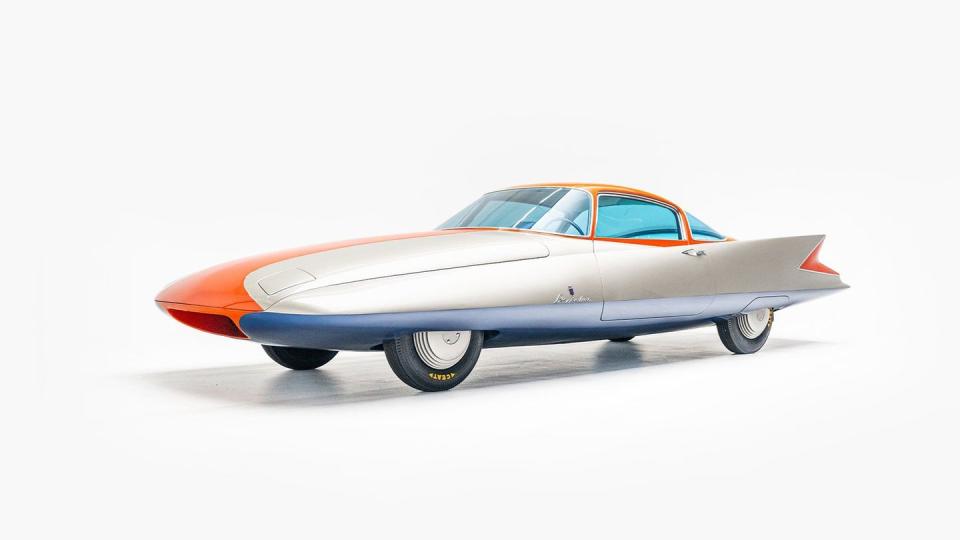
Now, the 1955 Chrysler Ghia Gilda is maybe not so unfortunately shaped. Built by the Ghia styling house in Turin at the direction of Chrysler design boss Virgil Exner, the Gilda did highlight post-war exuberance and space-flight, jet-age optimism in the same general era as the Alfa Romeo BATs.
Of course, it didn’t have the gas turbine engine it was supposed to have when it debuted at the 1955 Turin show, but who cared? It was the styling that everybody loved and the assumption of a jet engine was enough.
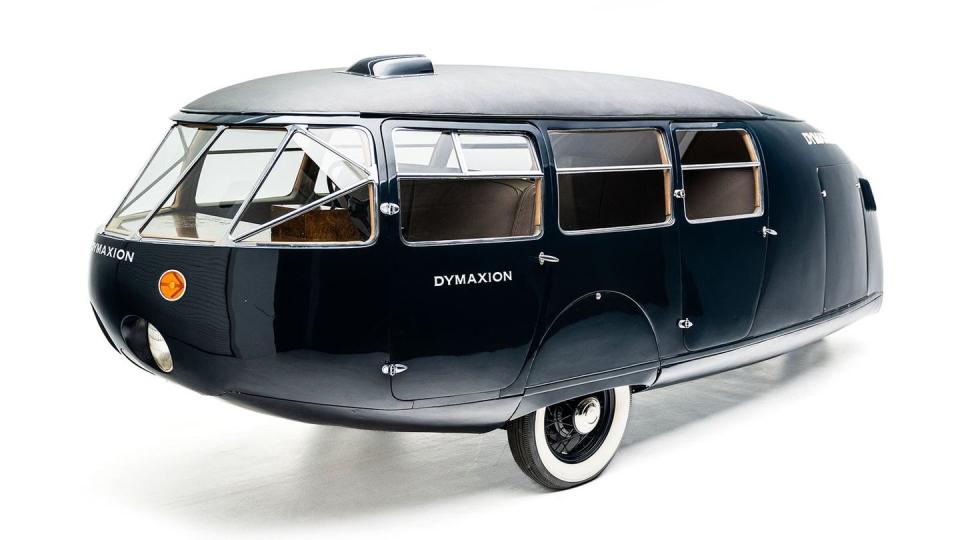
And the Buckminster Fuller Dymaxion was and remains cool. Sure, this one also had three wheels—one in back and two in front—making it as unstable as a bent helicopter blade. But in a way it foreshadowed the low-Cd minivan that would take over family transportation a half century later. Who wouldn’t want to own one of these?
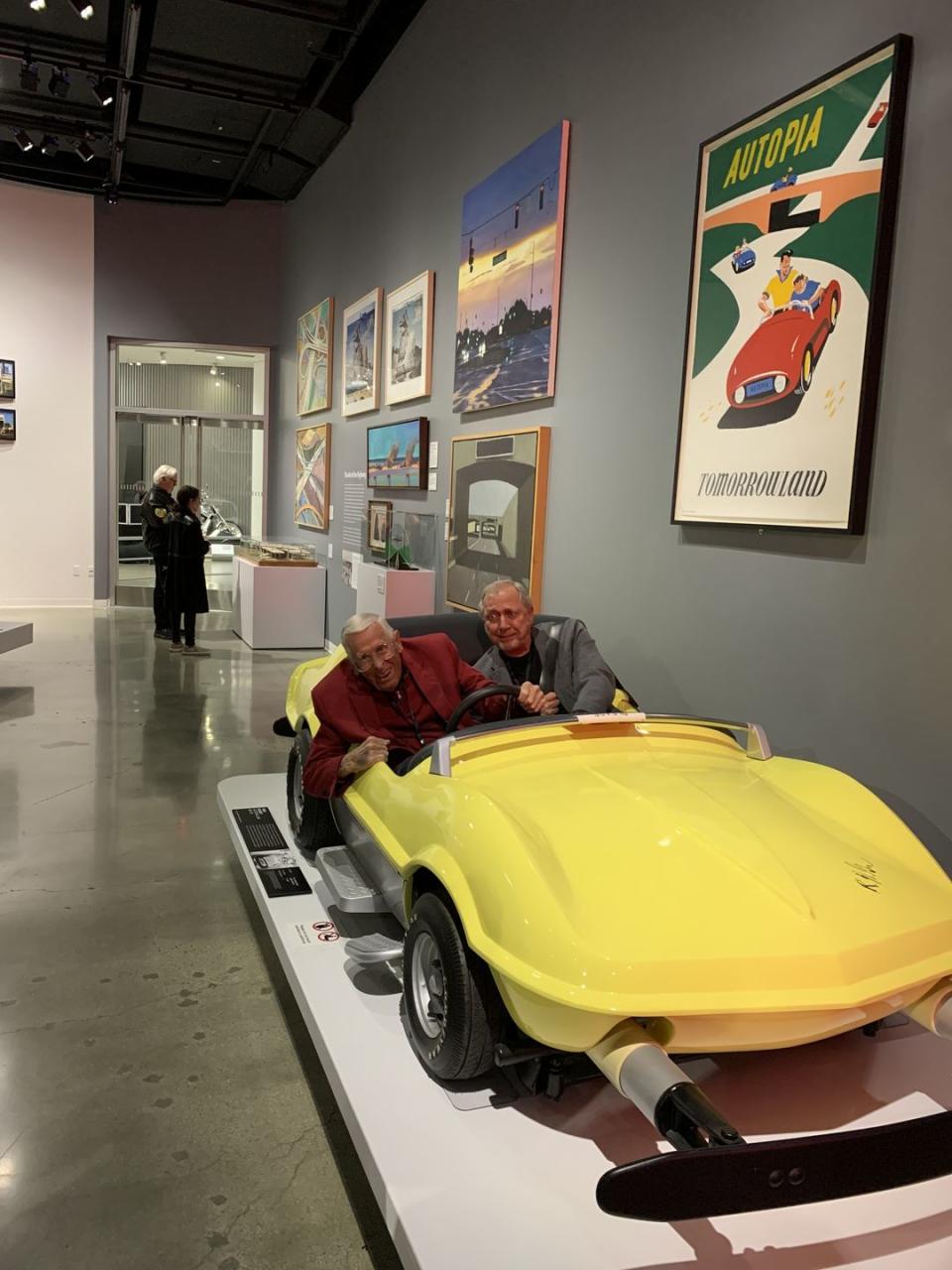
And of course, there is a fine yellow Disneyland Autopia car parked right under a poster for the ride. Who doesn’t love the Disneyland Autopia? Didn’t most of us learn to drive there? This car was a 1968 Mk7 brought to the Petersen by its owner, a mechanical engineer who had lovingly restored it (along with about 130 gas-powered scooters, but that’s another story). Autopia’s creator, on behalf of Walt Disney, was Bob Gurr, the last of the original imagineers who built Disneyland.
“As the art begins to blend into reality, that’s where Walt Disney put me to work,” said Gurr, who also designed the monorail, the Matterhorn bobsleds, and the submarines at Disneyland.
Gurr designed the cars without bumpers because “they were never going to bump one another.” That was the assumption, anyway.
“The end of the second week there were 37 cars and there were only two running.”
The bumper car was cool. So let’s give the cars in the exhibit a score of three out of five.
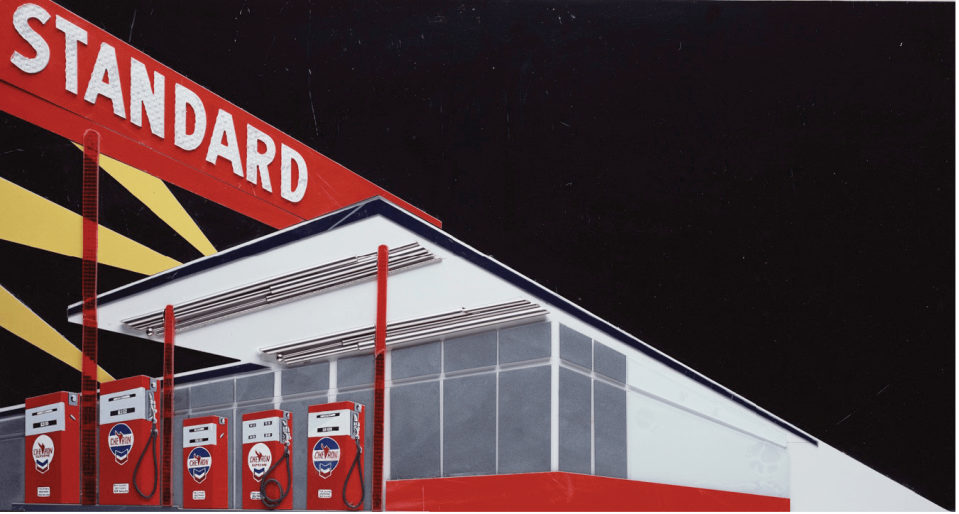
Now, the art that is hung around the cars in the Petersen’s Eyes on the Road, well, there are some nice works. The art on the wall is just as important as the cars on the floor.
Four of Ed Ruscha’s famous Standard Station paintings are hung together, creating a starkly delightful glower. The four are on the wall facing the Gilda. Ruscha made a photo book called Twentysix Gasoline Stations, and, according to artsy.net, promoted his interest in “closely observing the banal and the mundane.”
While they all look alike at first, the longer you look the more detail you notice. Ultimately it makes you want to go fill up with premium, or eat a red licorice. It is surprisingly intriguing. The four in the Pete are nighttime takes, with black sky instead of the more commonly seen blue daylight.
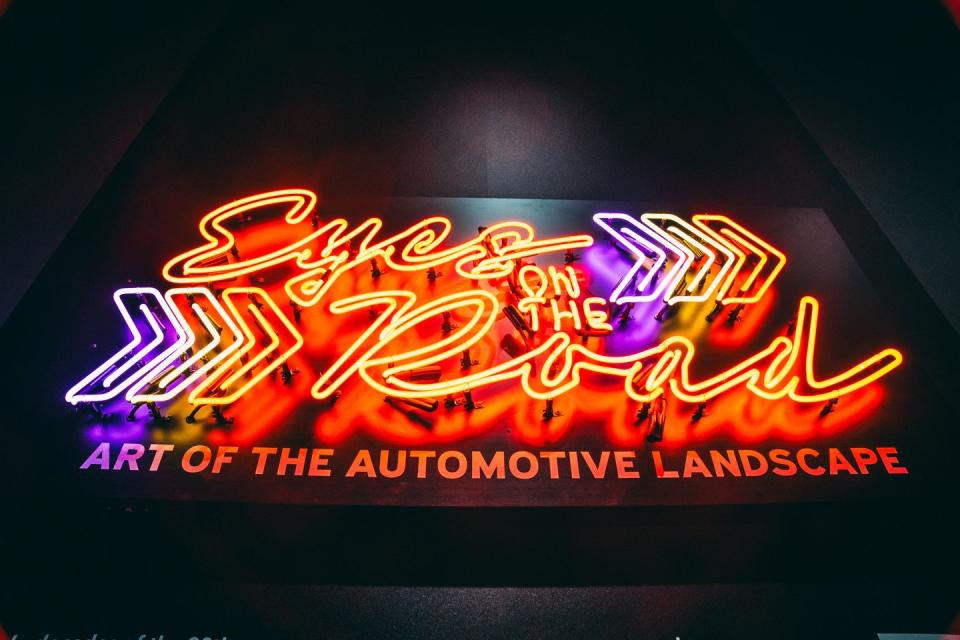
The neon gold “Eyes on the Road” sign that looms over the whole exhibit is impressive, too, as is the collection of Popular Science covers depicting cars of the future that never came to be.
The freeway interchange artworks might at first remind you of how much you hate LA traffic, but then look at them longer and they mesmerize you just a little. Maybe not enough. Nor are you inspired by the paintings depicting freeway crashes or earthquake-like devastation. And the graffitied road signs and various other “Art of the Highway” works just made me want to move out of LA like so many disaffected Angelenos are doing.
So, artwork: four out of 10.
The whole exhibit is crammed into the relatively small Hammer Gallery just off the entrance lobby, which has featured previous artsy exhibits. Maybe I just don’t get it, but if I don’t, then the typical small block Chevy-lovin’ museum attendee might not get it either.
The Petersen has hosted the most beautiful cars in the world in its 30 years, and usually scores hit after hit. Call me a grumpy ignoramus. Many people do. Luckily, the rest of the museum is packed with cool cars. So go anyway.

